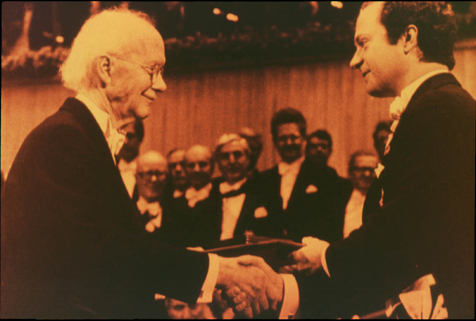
Faculty Research 1980 - 1989
Enhanced lysis of [125I]5-iodo-2'-deoxyuridine-labeled target cells in the presence of normal macrophages: possible mechanisms of action.
Document Type
Article
Publication Date
1985
Keywords
Cell-Line, Cells-Cultured, Cytotoxicity-Immunologic, DNA-Replication, Idoxuridine: du, Iodine-Radioisotopes: du, Kinetics, Macrophage-Activation, Macrophages: im, cy, Mice, Mice-Inbred-C57BL, Sarcoma-Experimental: im, SUPPORT-U-S-GOVT-P-H-S
First Page
63
Last Page
73
JAX Location
491
JAX Source
J-Leukocyte-Biol. 1985 Jan; 37(1):63-73.
Grant
CA27523
Abstract
The potential mechanisms involved during the faster release of [125I]-iodo-2'-deoxyuridine (125IdUrd)-labeled target sarcoma cells in the presence of normal C57BL/6J peritoneal macrophages were investigated. Maximum (= 90%) "spontaneous: release of 125I from target cells cultured alone occurred over a period of about 10 days. However, after about 3 days, confluent sheets of target cells developed. In the presence of normal macrophages, 90% of the 125I was released between 3 and 7 days, again with the formation of confluent sheets of target cells. This enhanced 125I release was not influenced by increasing the relative concentration of IdUrd using the nonradioactive isotope 127IdUrd. Established mechanisms of target cell destruction were investigated but no evidence was found for the involvement of superoxide anion, hydrogen peroxide, or regulation by prostaglandin synthesis. The macrophage-mediated effect was abrogated by incorporating hydrocortisone-acetate (10(-7) to 10(-4) M) into the culture medium but this did not affect target cell proliferation. The use of serum-free culture medium suggested that macrophages secreted a soluble mediator that was not derived from or dependent on the presence of fetal bovine serum. In addition, macrophage-conditioned medium was able to induce the faster 125I release. The failure to precipitate with 20% trichloroacetic acid the 125I released from target cells cultured in the presence of macrophages indicated that the radioactive component had been separated from the precipitable DNA. The data are discussed in light of two possible hypotheses: that macrophages recognized subtle changes in IdUrd-labeled cells and exacerbate radiotoxicity, and that the faster release reflected proliferative death caused by stimulated growth.
Recommended Citation
Evans R,
Eidlen DM.
Enhanced lysis of [125I]5-iodo-2'-deoxyuridine-labeled target cells in the presence of normal macrophages: possible mechanisms of action. J-Leukocyte-Biol. 1985 Jan; 37(1):63-73.

